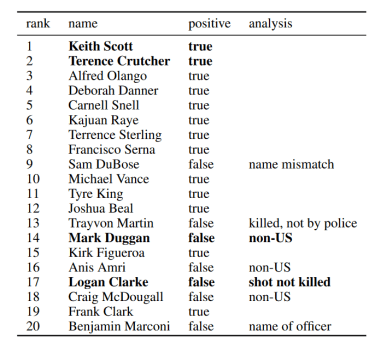This news-reading AI could scan for police shootings nationwide

Ask how many people have been killed in the last couple decades by police officers, and results vary widely. Local and federal authorities may track them differently, likewise activist and research groups. One project hopes to keep better tabs on police-related fatalities by having an AI system extract them from news reports nationwide.
Brendan O’Connor at the University of Massachusetts Amherst noted that although accounting differs from place to place, reportage is pretty unambiguous. While the justification for a shooting may be disputed, it’s hard to get around the basic statement of fact that an officer shot and killed someone. If a computer could learn to look for that, it could act as a simple but effective national net for that information.
O’Connor and his colleagues first scraped Google News for news articles from 2016 that mention police (e.g. “officer,” “cop”) or fatalities (e.g. “shot,” “died”). This corpus is processed to remove duplicates and obvious mistakes, then the portions of text directly related to the killing were isolated (e.g. “Officer Baker shot John Doe, who later died.”).
The machine learning system used these to attempt to create a database of people who had died during police encounters, and the police officers involved. As ground truth for its training, the researchers used Fatal Encounters, an existing database of police-related fatalities manually assembled by journalist D. Brian Burghart.
The resulting model caught 57 percent of the police shootings listed by Fatal Encounters in the last quarter of 2016. That may not sound particularly effective, but it’s promising — with more data sources and a bit more training, that number could rise considerably. We’d still need people like Burghart checking closely, but even in its current state the system could help speed things along.
Indeed, the AI system isn’t really intended to work alone, as noted in the paper’s conclusion:
One goal is to use our model as part of a semi-automatic system, where people manually review a ranked list of entity suggestions.
As with the best applications of AI, it’s meant to complement, not replace, the human element. And the researchers point out that once it improves a bit, it could also be tweaked to extract other events from news reports — police saving lives, for instance.
The authors presented their paper at the Association for Computational Linguistics’ 2017 Conference in Copenhagen.
Featured Image: Getty Images/iStock/grynold (composite by Bryce Durbin/TechCrunch)
